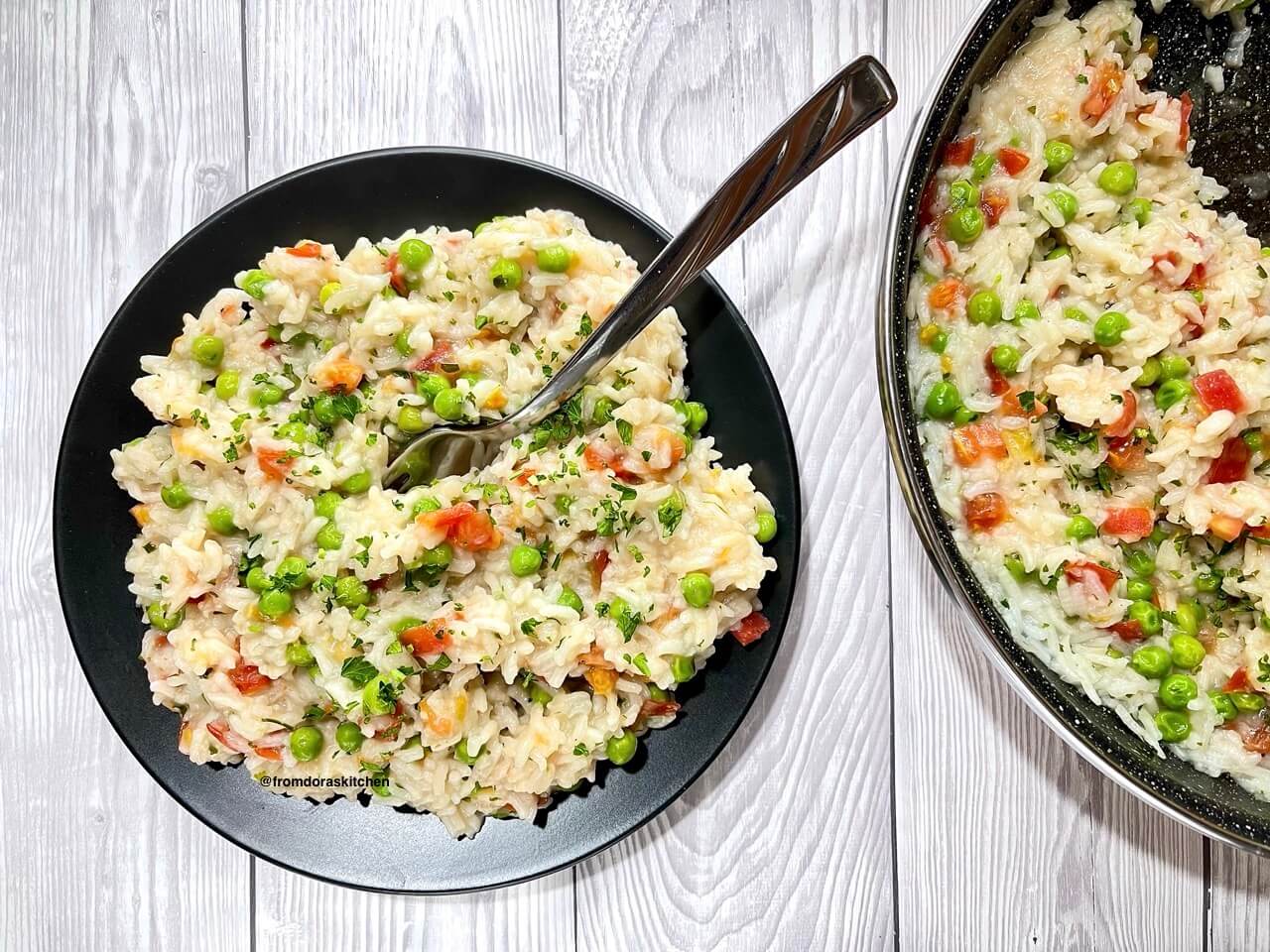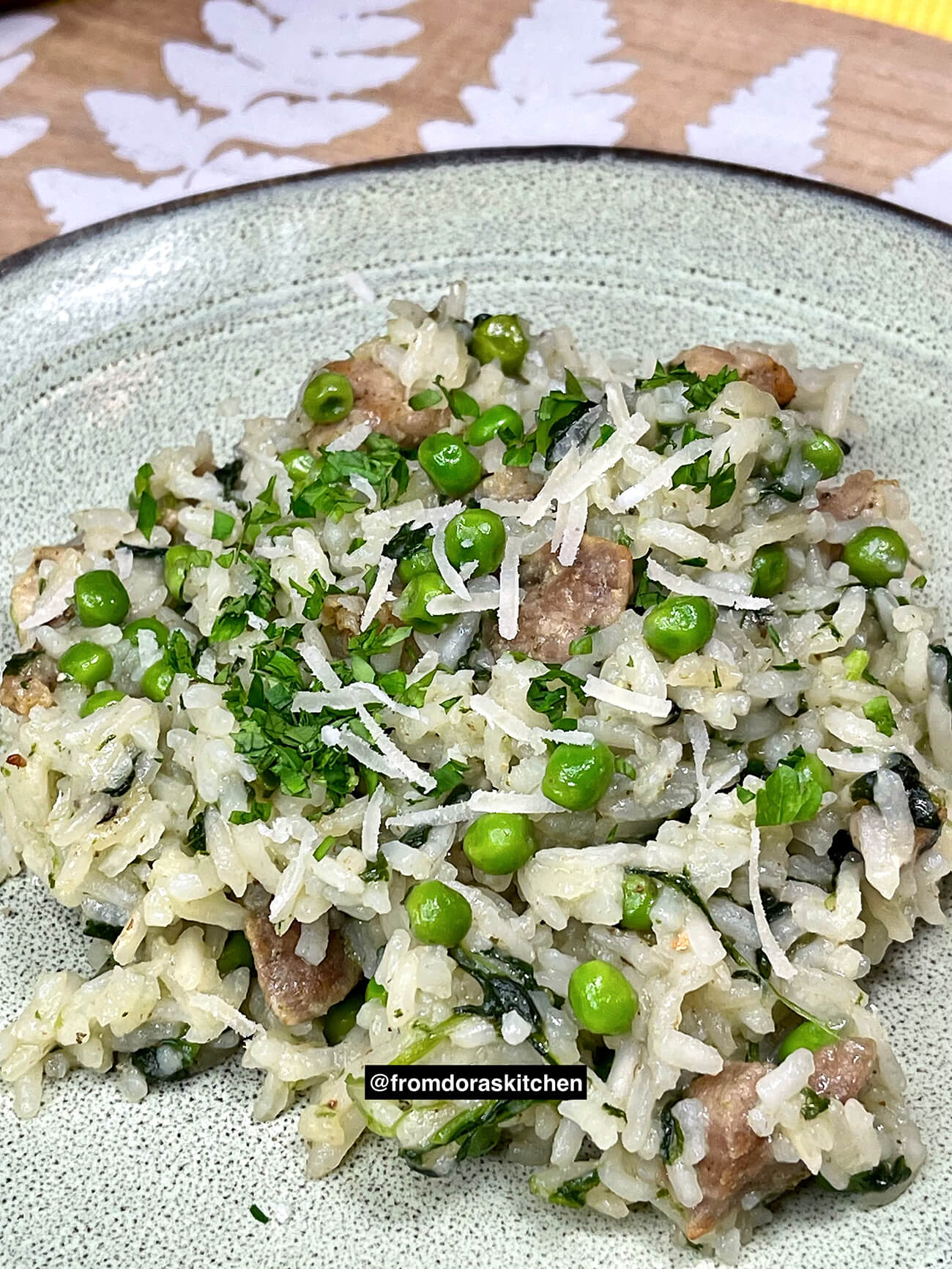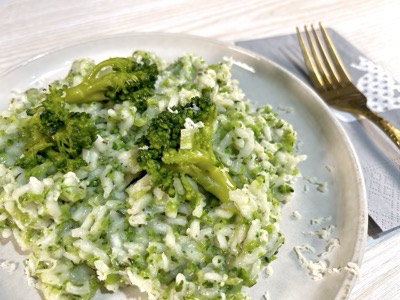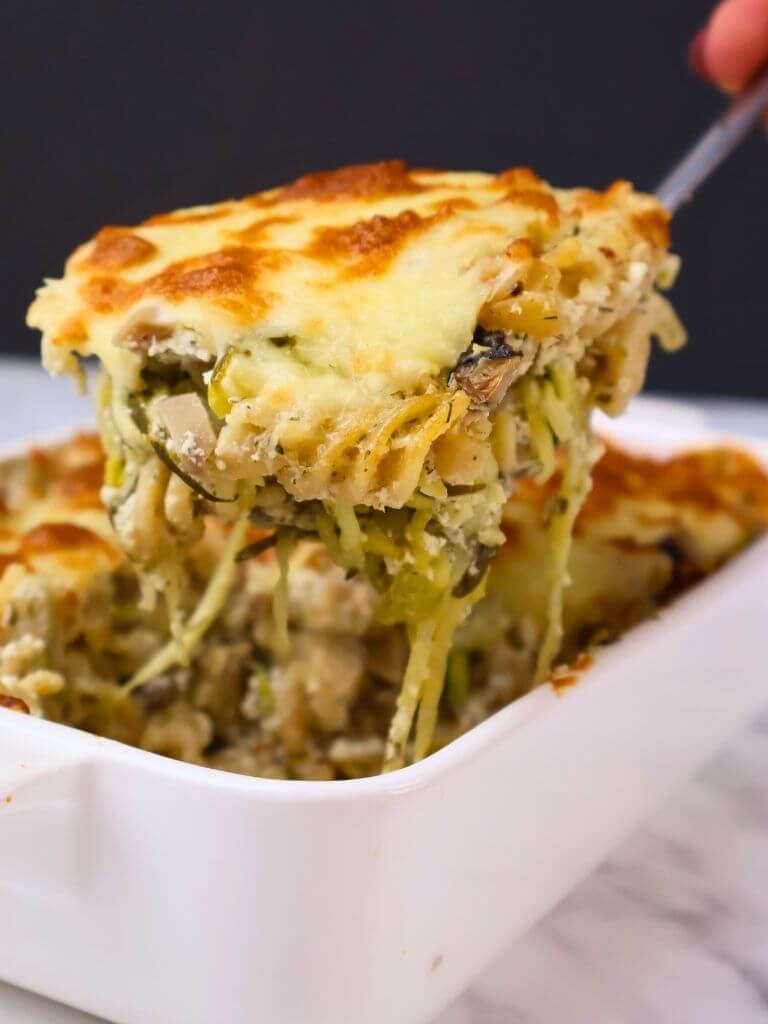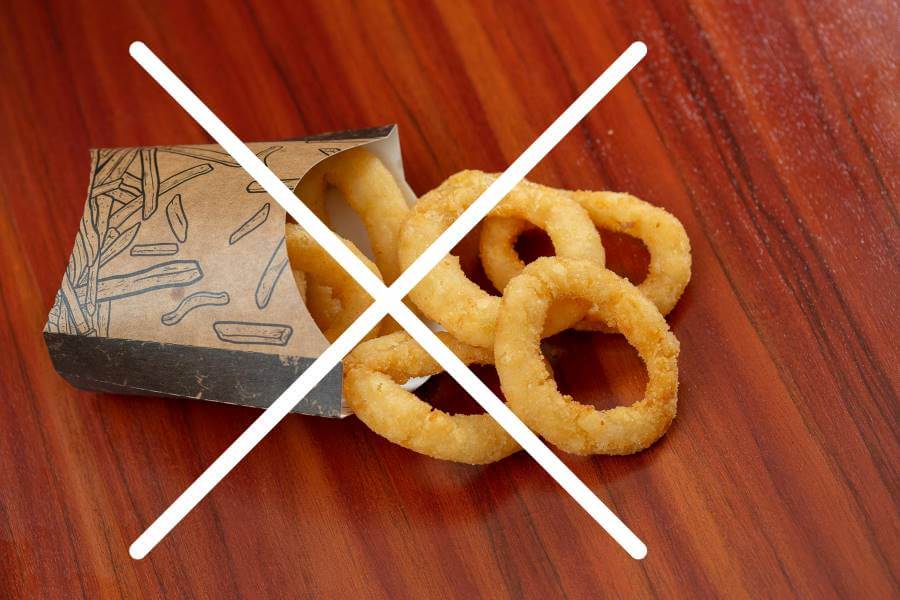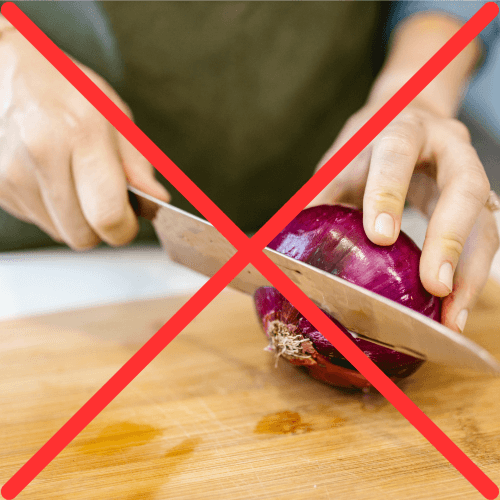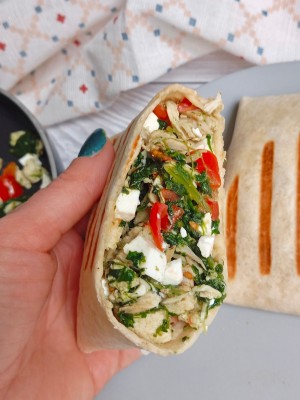Risotto is one of the classic Italian comfort foods. It is like a delicious hug on the plate, reminding you that everything will be alright. It sounds wonderful, right? Well, if you have an allium allergy like me, then risotto is just a mythical meal that you can only dream about, and wishing for a day that you can finally taste this divine food everyone is appraising. Well, I got tired of waiting for that day, and I decided to make my own no onion risotto recipes. After lots of tasting, and devouring lots and lots of plates of risotto, I decided to create a guide on how to make no onion risotto so that you can enjoy this divine meal too!
How to choose the correct rice for no onion risotto?
The main ingredient of risotto is rice, and here you really do not want to mess around. In the beginning, I tried to make risotto with long-grain rice, and it tasted okay, but I was missing this creamy wow effect that I had heard and read about. After reading about risotto in different cookbooks, I noticed that they all use short-grain rice. The next time I made risotto, I used short-grain Arborio rice, and I got that creamy wow effect that I was missing. It turns out that you want to use short-grain and starchy types of rice because as they cook, they release the starch which makes the risotto creamy.

One big mistake you do not want to make when making risotto is to rinse the rice because you will wash away the starch that will make the risotto creamy. Do not do it, trust me because I did it, and the risotto tasted bad.
The best rice for risotto are: Arborio, Carnaroli, and Vialone Nano. No matter which one you choose, you will have wonderfully creamy risotto.
How to start cooking risotto without onion?
When it comes to risotto, the first step is to cook the onion. Since I can’t eat onion, I just skip this step and start toasting my rice instead. Depending on the risotto I’m making, I will first saute vegetables or meat that are part of the risotto recipe, and on it add short-grain rice, and toast it until translucent. You do not want to burn the rice because the rice will not release its starch, and as a result, rice will not cook evenly and the risotto will taste bad and not creamy at all.
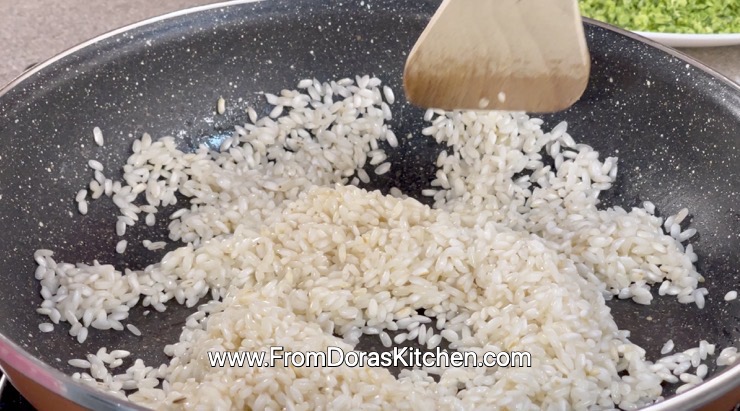
I tried substituting onion with some vegetables for a base, but I didn`t see any difference, so I just skipped it most of the time. So far I have tried finely grated carrot, parsley root, celeriac, or fennel.
Can you make risotto without wine?
You can absolutely make a wonderful risotto without wine. I hate alcohol in the food, no matter if it’s in the cake, appetizer, or main dish. I just hate the taste, it spoils the meal completely, and it causes my GERD to flare up. According to professional chefs, you add white wine to risotto to give a bit of acidic flavor. If you are searching for an acidic flavor, you can always add a few drops of lemon juice at the end of cooking, before you add the cheese.
By skipping the wine, you can skip unnecessary calories and sugar that wine has. This can transform risotto into a wonderful healthy meal that will make you feel great.
Water or Stock or Broth?
Every risotto recipe asks for hot stock to be added gradually. Here things can get complicated because the majority of already done stocks and broths are full of alliums, and they can be made risotto into an allergy hazard meal. Making homemade stock or broth can be time-consuming.
I do not cook with broth and stocks because I feel they are making my meals too heavy for my stomach, and they kinda overpower the taste of everything. This is the reason why I’m making my risotto with hot water. I suggest making risotto with water if you are having acid reflux, gallbladder problems, or a sensitive stomach. Also, by substituting stock and broth with water, you are cutting on the calories, and it makes risotto a healthy meal.
Do you really need to deglaze the pan when making risotto?
Deglazing sounds like some complicated move that only professional chefs can make. But actually, it is very simple, just add a small amount of liquids to the pan when browning something.
When it comes to no onion risotto, there might not be a need for deglazing. If you are just toasting the rice, then there is no need for it. Every risotto builds the flavor over time, as how the rice is cooking, it is absorbing the flavor. So deglazing is not necessary.
What about butter in risotto? Here is what I find out
Every risotto recipe ends with adding butter and stirring it. They say that butter helps emulsify the starches for a silky finish. I made so many times risotto with butter and even more times without butter. My conclusion is that I didn’t feel any significant difference with and without butter.
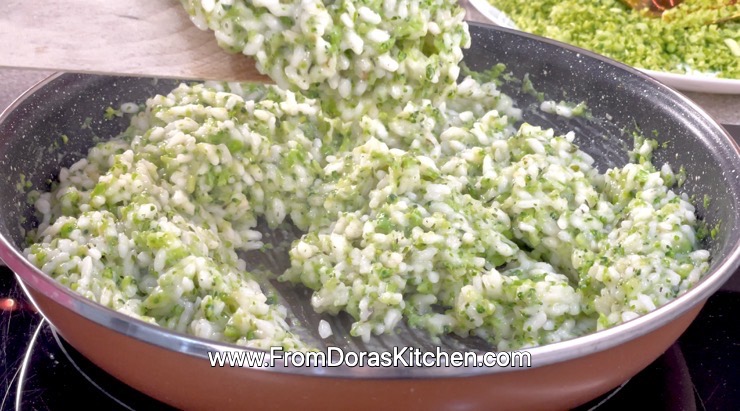
You can add butter to your risotto, but I would suggest skipping the butter if you have acid reflux, gallbladder problems, or a sensitive stomach. Even without butter you will get delicious creamy risotto to enjoy.
Let’s talk about cheese and risotto
The very last step of every risotto is to add grated hard cheese. I agree with this step because the melted cheese in risotto brings extra creaminess and comfort. However, I do not agree that hard cheeses like Parmigiano Reggiano or parmesan are the only ones to add. I made risotto with semi-hard cheeses, and sometimes with soft cheeses like ricotta or mozzarella. No matter which cheese I put in the end, my risotto was delicious.

I would suggest skipping on hard cheeses if you have acid reflux and gallstones. Try adding semi-hard cheeses, or soft cheese in a smaller quantity than the recipe states. Even a small amount of cheese will make risotto creamy and cheesy.
Final tips on how to make risotto without onion
At the end I would like to share a few more tips on how to make no onion risotto amazing.
- Stir, stir, stir – risotto requires lots of stirring, so when it is absorbing the water, stir without stopping. This will help develop flavors, and the rice will be equally cooked, and creamy.
- Prepare everything before you start cooking because everything is happening fast.
- Have hot water – you will be adding hot water gradually, and this way risotto will develop the creaminess.
- Go generously on the salt – rice loves salt, and it will absorb it. Taste the rice after you add the last amount of water, and add more salt if necessary.
- You can add a few droplets of lemon juice in the end to add a bit of zest or acidity.
I hope that you will find my guide on How to make no onion risotto helpful!

